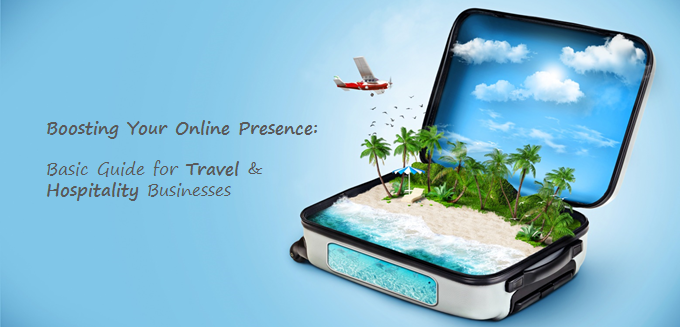It’s all about the Millennials. Travel and hospitality businesses – go about doing what you are doing, keeping in mind the millennials. They are the money makers. They are the ones you need to keep happy.
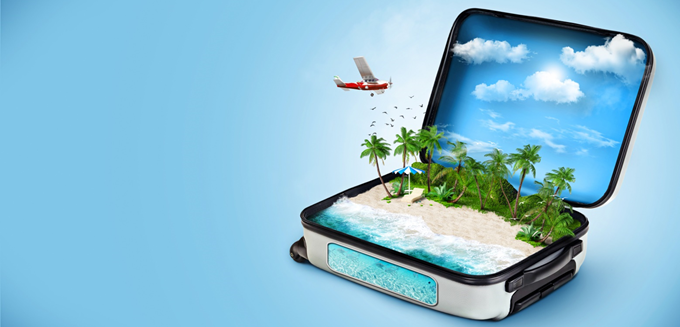
Keeping up with our industry-specific content, here are four factors that I think can easily be implemented in your tourism marketing process and can boost online presence for travel and hospitality businesses.
Before starting off with this post, I did a bit of research. I noticed that all the articles, posts, documentation I came across pertaining to the trends of tourism marketing had one thing in common – they all talked about the millennials, and rightly so. Not that you can’t focus on the other age groups, but they are the ones who make the most amount of money and are willing to splurge whenever the need arises. Taking advantage of this would be awesome (don’t get me wrong, I’m only talking from the perspective of travel and tourism marketing).
———————————————————————————————————————————-
Tourism Marketing Tip #1: All things mobile
Mobile-responsive website.
The first thing that comes to my mind is getting a mobile-responsive website. If you follow the LeadSquared blog, you would have noticed the number of times we have stressed on the increasing usage of mobile devices for marketing, shopping, online transactions, and so on. You may not be aware of it but if you are generating traffic through mobile devices and your website is not responsive, you are probably losing a lot of leads. Why? Because the interface is not user-friendly and that impacts user experience. This is what you need:
Website on desktop Website for mobile
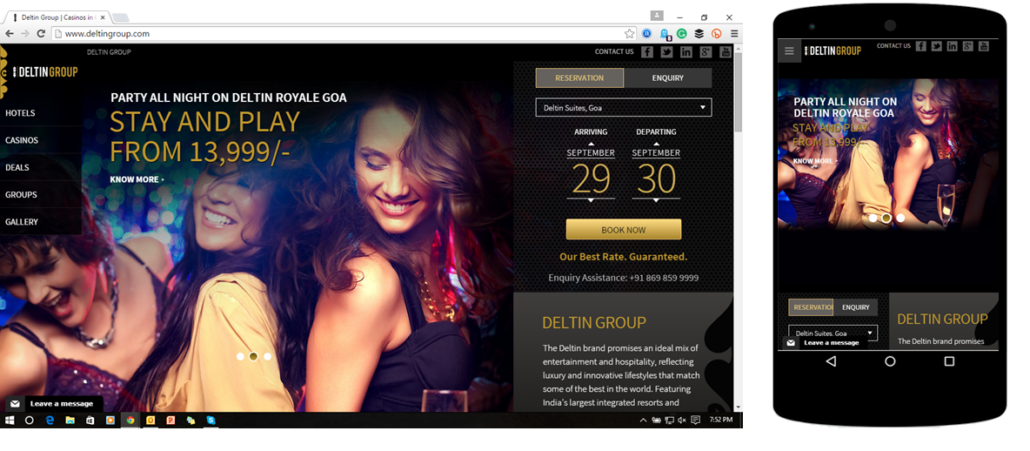
According to this report from Think with Google as of March 2015, travel and hospitality queries searched on mobile devices have increased and are continuing to do so rapidly. Another report suggests that leisure travellers are more likely to make travel bookings on their mobile device while business travellers are more likely to book via mobile app (more about that below).
Mobile app.
Getting a mobile app would also make a difference since ‘a lot’ of people are now relying on their phones to get things done. Go-Globe’s report on mobile app usage indicates that mobile apps now account for more than half (52%) of all the time spent on online digital media! Here’s another statistic from comScore:
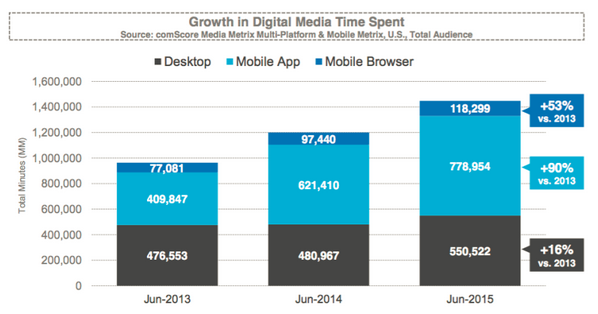
With so many travel and hospitality apps already available, travel and adventure buffs are now more like to directly go to their favourite travel app rather than search on Google to see what their options are. This is primarily because they are more familiar with the interface and are expecting to hit upon exclusive discounts.
Using mobile phones to check-in to hotels has also been rising in the West, but not as much in India just yet. But honestly, it’s only a matter of time until it is seen in India as well.
Key: User experience
———————————————————————————————————————————
Tourism Marketing Tip #2: Social media strategies
Now I’m sure you know how effective Facebook and Twitter can be B2C businesses. Travel and hospitality businesses can really take advantage of such platforms. In fact, I think travel-hospitality, health-wellness, ecommerce and food chains, are the ones who benefit the most as they can not only generate traffic through paid channels but also through organic means (more than most other businesses). Having said that, I’m sure most of you would already have a Facebook account. How about Twitter? Did you know that Twitter has started running ads in India as well. Sorted then?
These are a few things you could try to get going:
Latch onto trending topics and using #hastags wherever possible.
I have a couple of examples to support my statement. And I’m not saying it always works but unless you try, you’ll never know.
- You can’t talk about a successful hashtag campaign on Twitter for tourism marketing without talking about Travelocity’s #iWannaGo campaign. Some of you may already be familiar with this but for those of you who aren’t, take a look at this coverage of the campaign by Social Media Examiner.
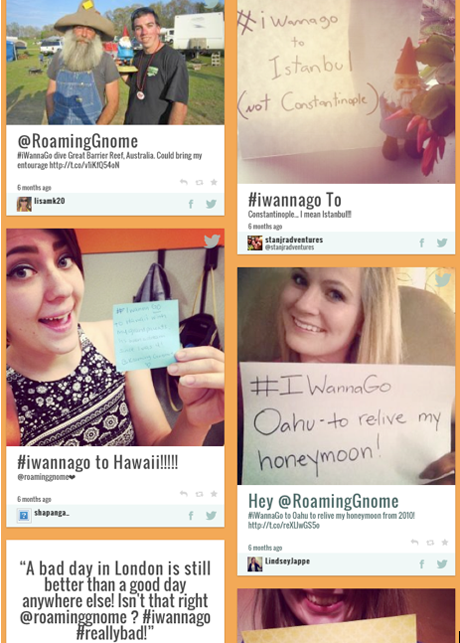
2. Expedia is also going great guns with the hashtag. Every Wednesday, Expedia holds a Twitter chat using the hashtag #ExpediaChat wherein travel buffs share their bucket list of holiday wishes using that hashtag. Expedia reciprocates this ‘hub of consumer knowledge’ with awesome holiday giveaways. Going slightly off the topic but having regular Twitter chats is also a great way to build a community :)
You could also take advantage of seasons, holidays and festivals. Indians reading this would know that in this country, there is no dearth of festivals. One comes along every few weeks (Eg. #DiwaliDhamaka)
Make the most of images.
Travel and hospitality businesses can actually take advantage of this unlike most B2B and some B2Cs. You can:
- Hold photo contests and give out prizes/giveaways.
- Ask visitors to share wacky/cool photos of themselves in different destinations and whoever wins, gets a special offer.
- Get them to guess the location of a photograph within a limited period of time.
- Share picturesque photos of holiday destinations, to grab the viewer’s attention.
Brands such as Expedia, Travelocity and Airbnb have really used this medium optimally to drive traffic and generate leads using platforms such as Facebook, Twitter and Instagram.
Those familiar with the term #ThrowbackThursday would know that it is all about sharing an image from yester years. Expedia modified this and used it beautifully:
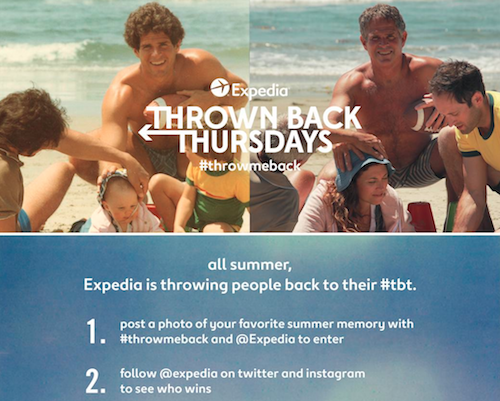
Whatever you do, the end result should be fostering engagement. No matter how many posts you post or images you share, if it fails to engage, you need to rethink your tourism marketing strategy.
Video Ads/Content.
Imagine watching a thrilling 15-second high-quality video of someone paragliding or scuba diving; doesn’t that make you want to go do that? Yes, if you are an adventure buff. And, if you are the calm and reflective kind, maybe the beaches of Bali can lure you in?
In case you have noticed, for the past couple of days, Facebook has been showing mostly videos – that’s because Facebook has recently made the video ads CPV. More about that, here: Facebook Lead Gen Tactics for the Smart Marketer.
Still not convinced? Well, let me tell you that a study by Think with Google has revealed that travellers:
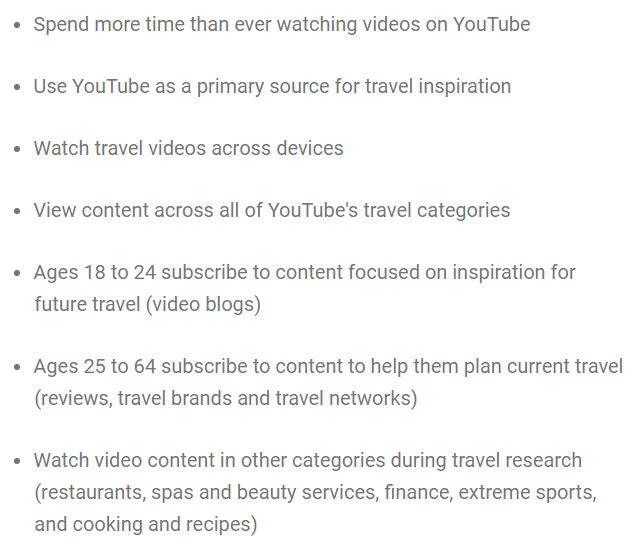
Check out this video advertisement of the mobile app by Marriot Hotels. It practically summarizes the purpose of my post to a great extent – not directly but you’ll see what I mean.
Instagram.
Instagram is growing in India and fast. There are tons of other photo-sharing apps available but at the moment, in the Indian context, Instagram is among the more popular ones. It’s free and engaging. An image or two a day can do no harm.
The ‘roaminggnome‘ generates new followers every day with its Instagram posts and relevant hashtags. So can you!
Here’s another example:
Over 27,000 pictures were taken and it is said to have contributed to an increase in 15% web traffic. Isn’t this inspiring or what?
Key: Engagement
(I have also realized that most of these campaigns tried to emit one common feeling, nostalgia. Maybe that’s something you should keep in mind for travel and tourism marketing).
————————————————————————————————————————————–
Tourism Marketing Tip #3: Content is King
So I have deliberately chosen those words knowing they may have been used multiple times in the past. But without it, generating organic traffic would not be very easy considering there are innumerable travel and hospitality websites to choose from. You need something that separates you from the rest.
Also, it is highly likely that your competitor would also be having a mobile app, mobile-responsive website, running ads on social media, engaging with prospects through contests, quizzes, marketing offers and so on. But content is original, individual and separates the wheat from the chaff.
High-quality engaging posts can seriously increase traffic to your blog and then to your website. Maybe instead of writing about the 7 things you should do/see in Thailand, why not talk about the 7 things you shouldn’t…? I admit, I am not from the travel and hospitality industry so maybe I am speaking a bit out of turn, but from all the stuff I have seen online, it’s all about what you should do, not what you shouldn’t. So maybe you could give that a thought?
This is relevant for both travel and hospitality since they both involve a specific location, and that is what you need to take advantage of.
For travel and tourism marketing content ideas, can get started here: 10 Content Marketing Ideas for Travel and Tour Businesses
Key: Originality
————————————————————————————————————————————-
Tourism Marketing Tip #4: Online Review Portals
Like it or not, today more and more people are relying heavily on what their fellow travel enthusiasts have to say about the place, the hotel, the food and so on. This is especially important for those in the hospitality business. Look at literally every other third-party portal for travel and hospitality, they all have review sections.
Get listed on sites like TripAdvisor, MakeMyTrip, Agoda, ClearTrip, HolidayIQ, Justdial, IndiaCom, TravelGuru, Yatra, FourSquare and so on and make sure that you have at least a couple of reviews in most of these portals, if not all. Another thing to keep in mind is to make sure that the information, the contact details, the pictures across all the portals are uniform.
Moving onto reviews, according to a report by Cornell University School of Hotel Administration:
- If a hotel has negative comments, the probability of visitors booking that hotel is about 2 out of 5.
- When they see a positive review, the likelihood of them making a booking is 3.5 to 4 out of 5.
So get your happy customers to review you on travel and hospitality portals! Even if you can’t get them to write reviews, at least have some sort of mechanism in place to get them to rate or like/dislike you and share it on your website. You can do this by –
- Sending a short email, where they can be redirected to a short survey about their trip, upon clicking the CTA, or
- Sending an SMS, asking how it was with two options saying Y for yes and N for no.
Key: Good Customer Experience
———————————————————————————————————————————–
I hope you can implement these four methods into your travel and tourism marketing process and I do hope they actually make a difference to your online presence. For further reading/reference, you could take a look at how mobile consumers search for travel and this awesome Minimalist Guide to Hospitality Marketing. Do you know of any other that you’d like to share?





